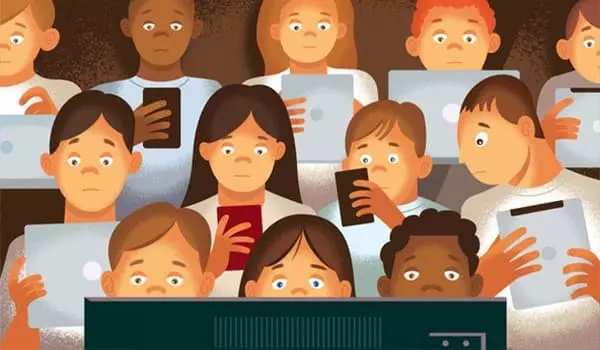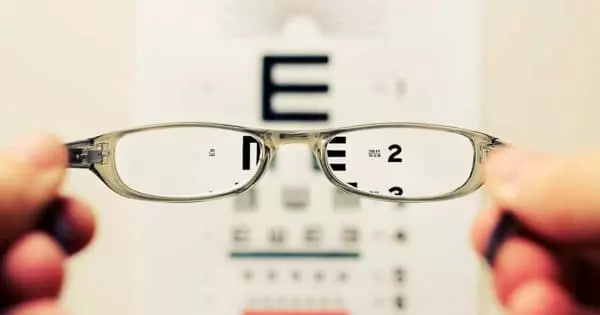A new study has found a link between screen time and an increased risk and severity of myopia (short-sightedness) in children and young adults. Higher education level may be a critical factor in young adult myopia. Education is related to socioeconomic background and extensive near work, such as reading and computer use. A previous study of a population of highly educated young adults discovered an 86 percent rate of myopia progression during law school.
A new study published in one of the world’s most prestigious medical journals has found a link between screen time and an increased risk and severity of myopia, or short-sightedness, in children and young adults. In this digital age, excessive screen time is a common hazard that can cause eyestrain in some people. However, the likelihood of permanent vision damage is low. About 80% of American adults say they use digital devices for more than two hours per day, and nearly 67% use two or more devices at the same time.
The open-access study, published in The Lancet Digital Health, was conducted by researchers and eye health experts from Singapore, Australia, China, and the United Kingdom, including Anglia Ruskin University’s Professor Rupert Bourne (ARU). The researchers looked at over 3,000 studies on smart device exposure and myopia in children and young adults aged 3 months to 33 years old.
Around half of the global population is expected to have myopia by 2050, so it is a health concern that is escalating quickly. Our study is the most comprehensive on the subject to date, and it reveals a possible link between screen time and myopia in young people.
Professor Bourne
After analyzing and statistically combining the available studies, the authors discovered that excessive smart device screen time, such as looking at a mobile phone, is associated with a 30% increased risk of myopia, and when combined with excessive computer use, that risk increased to around 80%.
The study comes as millions of children around the world have spent significant time using remote learning methods as a result of school closures due to the COVID-19 pandemic. The more time spent staring at screens, the more likely it is that vision-related problems will develop. Dry eye syndrome, for example, is becoming more common as a result of decreased blinking while staring at a screen. Myopia (nearsightedness), which is increasing at an alarming rate, has also been linked to children’s increased use of electronic devices.
Myopia has become more common in recent decades, a trend that coincides with children’s increased use of computers and digital devices. In Singapore, a staggering 90% of today’s primary and secondary school students are myopic, and there has also been a significant increase in myopia in North America and Europe.

In today’s day and age, the variety of electronic devices and digital media available is unprecedented. However, there is cause for concern. While these devices have improved our lives in many ways, there are some risks associated with overexposure, both in terms of mental and physical health.
Nowadays, children are glued to their phones. All of their handheld device activities, whether games, videos, or reading, may be harming their vision and may be a risk factor in the development and progression of nearsightedness. Furthermore, by spending so much time on their digital devices, children limit their physical activity, which can lead to a slew of developmental issues that will affect the child later in life.
Our children will be the most affected as technology transforms the way we live. Parents and professionals are concerned about the current impact of these devices on our children, and they want to find the best ways to manage the time spent using them in order to keep children healthy and strong.
“Around half of the global population is expected to have myopia by 2050, so it is a health concern that is escalating quickly,” said Professor Bourne, Professor of Ophthalmology in the Vision and Eye Research Institute at Anglia Ruskin University (ARU). Our study is the most comprehensive on the subject to date, and it reveals a possible link between screen time and myopia in young people.
“This study comes at a time when our children are spending more time than ever looking at screens for extended periods of time due to school closures, and it is clear that more research is needed to better understand how digital device exposure can affect our eyes and vision. We also know that people overestimate their own screen time, so future studies should use objective measures to collect this data.”















